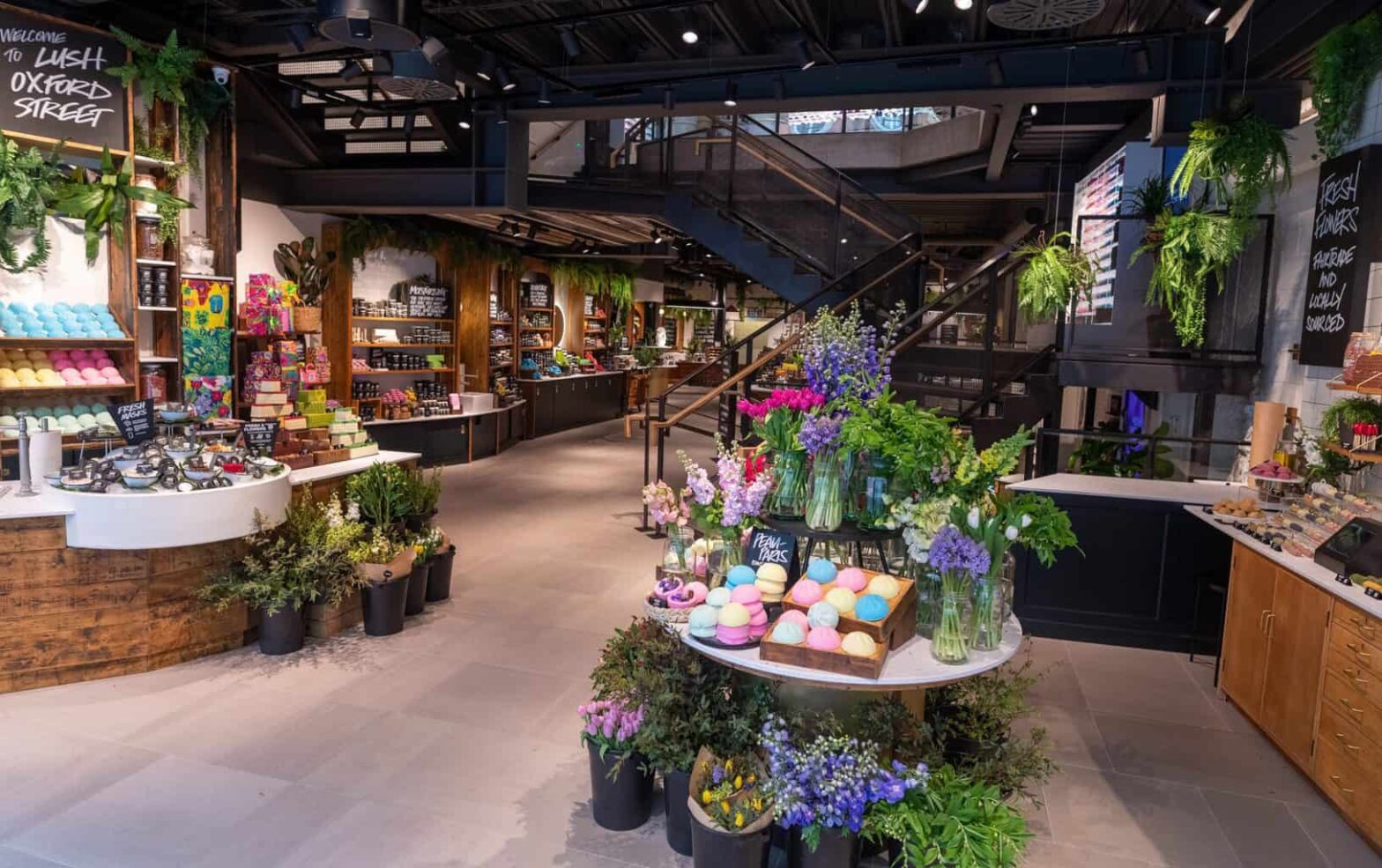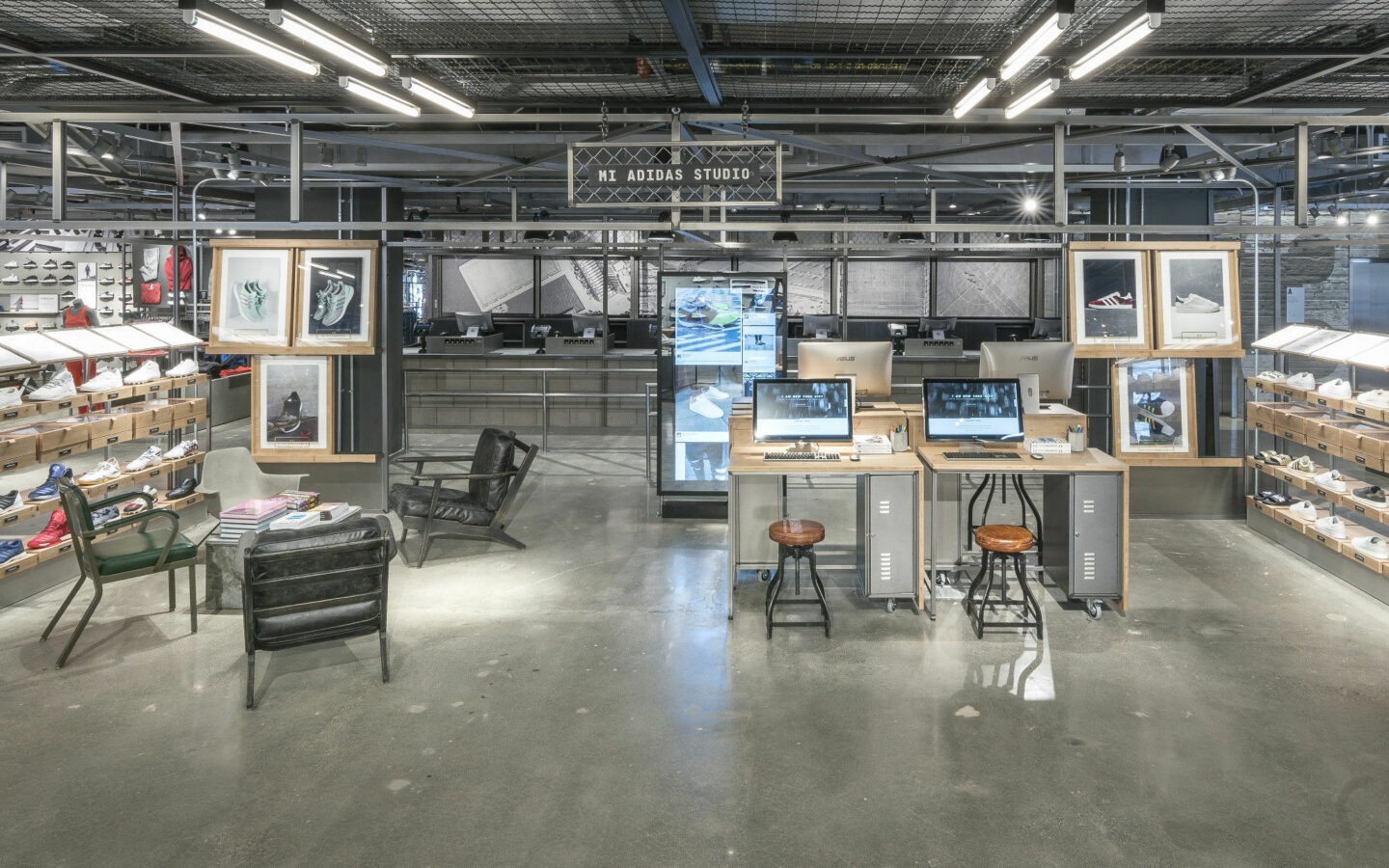
Experiential Retail Design
The term “experiential design” is heard a lot in retail…but what does it actually mean? And, more importantly, how can retailers use it to their advantage to provide the shopping experiences that customers have now come to expect?
Experiential retail design is defined as being…
“…the practice of employing experiential values in interior experience design. Experiential design is a new design approach to interior architecture based on modern environmental psychology emphasizing human experiential needs.“
Wikipedia
A shift towards more experiential design, then, sees designers and interior architects paying more attention to the ways in which a user will interact with their space. They are realising the importance of providing people with sensory stimulation and hands-on experiences for ensuring that physical environments make a lasting, meaningful impression on individuals.
Why is experiential design important for retailers?
Experiential retail design is crucial for retailers of all types as they work to remain competitive against their online rivals. Physical experiences are something that people simply cannot access through their computer screens and, as such, are a major USP for traditional bricks and mortar stores.
There is no use in fighting the rise of eCommerce, though. To evolve and adapt alongside their customers, brands must work hard to create omnichannel experiences that seamlessly combine their online and offline presences together into one coherent entity. In-store experiences such as product demonstrations, events and promotions must reflect a brand’s digital presence and serve as a natural extension of its overall identity.
Luckily, though, data on shifting consumer behaviours shows that people are using both online and offline shopping together. Customers tend to research and compare products online before going into a store which means they are more informed about what they want and closer to making a purchase.
Examples of Experiential Retail Design
Lush, Oxford Street
The cosmetics retailer Lush is well-known for its experience-centric stores that delight the senses at every turn. Its flagship store on London’s Oxford Street is no exception to this rule, boasting its very own florist, vegan coffee shop, interative displays and multi-sensory demonstrations.
With such a wealth of experiences on offer, it’s clear that Lush is making excellent use of data proving that nearly 75% of UK shoppers list being able to physically touch and test products as the main benefit of bricks and mortar stores.
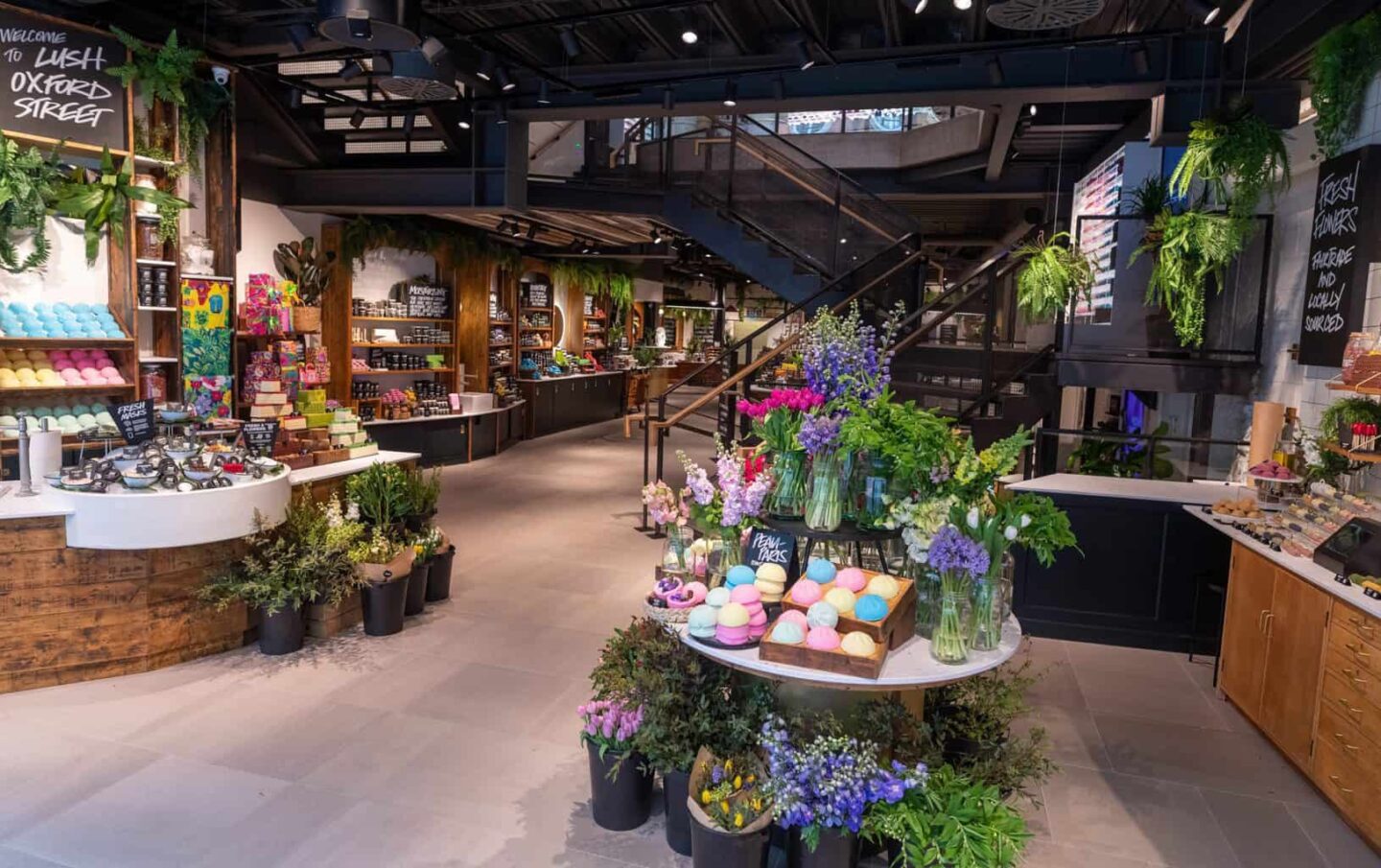
Nike House of Innovation, Champs-Élysées
Nike is a pioneer when it comes to experiential retail design, delivering experience-focused stores in high-profile locations all over the world. Its House of Innovation concept is the pinnacle of this effort, exploding onto the retail scene with a huge array of unique brand experiences that shoppers can’t wait to try for themselves.
The Paris House of Innovation joins the outlets already open in New York and Shanghai and provides floor upon floor of incredible sensory experiences. The space features an on-site customisation lab in which shoppers can design their own personalised trainers before seeing them getting stitched together in front of their own eyes along with dedicated product testing zones and massive video screens displaying hyper-local content.
These experiential design elements result in a store that is guaranteed to engage people and keep them coming back for more.
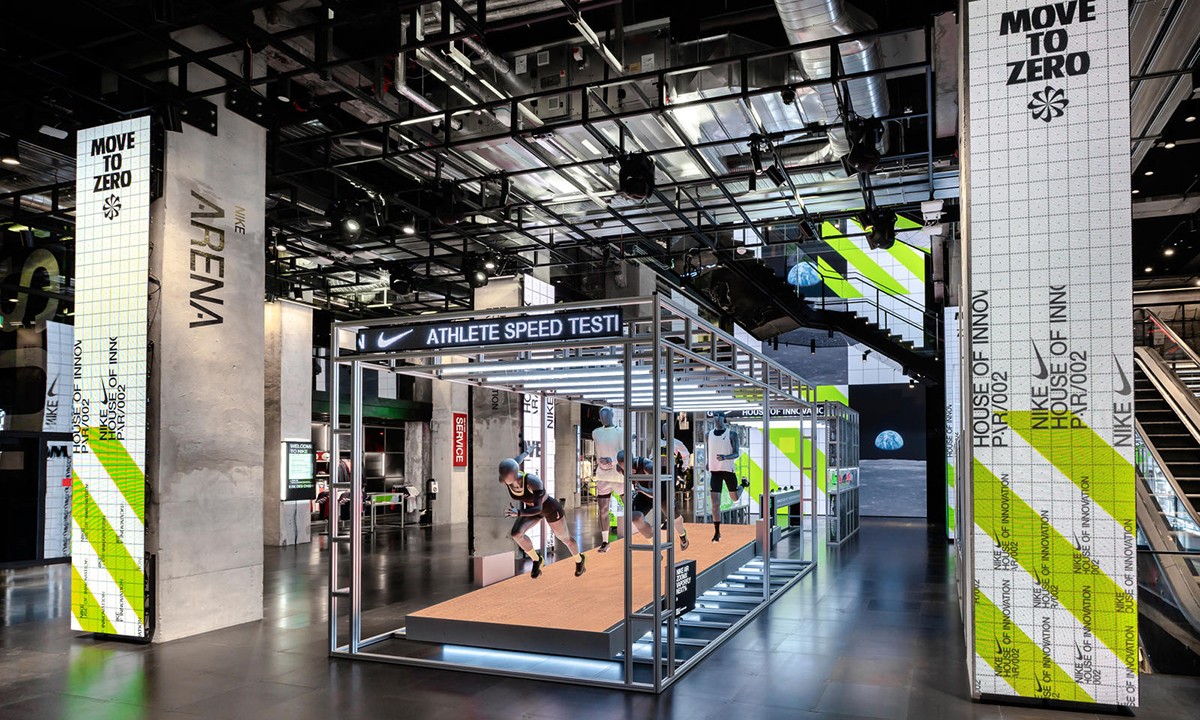
Primark, Gran Via
Primark has been going from strength to strength in recent years, opening a wave of new stores in some of the most high-profile locations across the world. Its Madrid flagship on the city’s busiest shopping street – the iconic Gran Via – is a wonderland of sensory experiences that makes the store a tourist destination in its own right.
Primark’s store designers chose a series of bespoke, snowflake-inspired LED lighting fixtures to create a sense of magic that is utterly unique to the space.
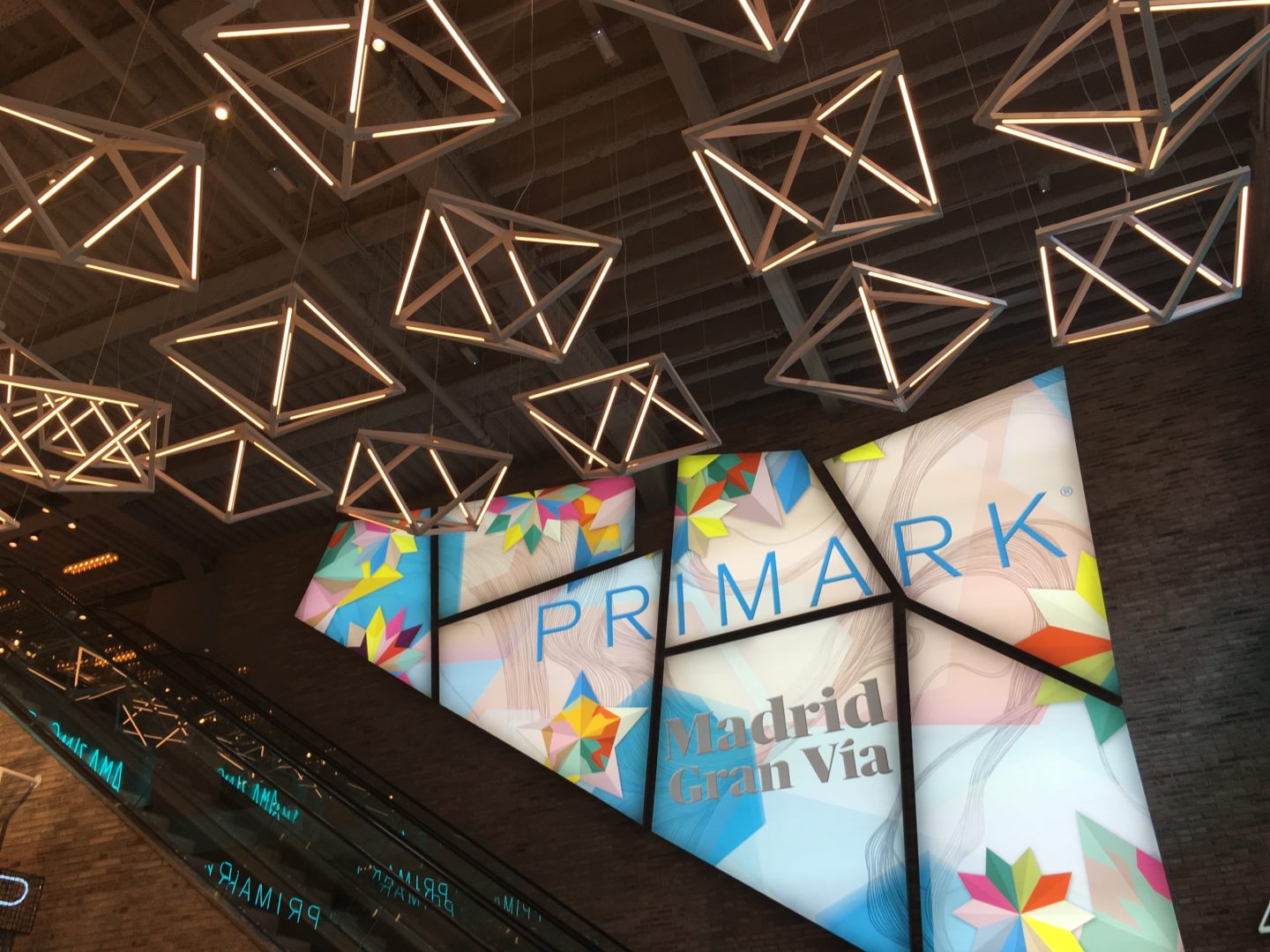
Conclusions
So, what is experience design within the world of retail? And how can brands use it as leverage against their online rivals when working to draw customers into their stores?
Here are the main differences between experiential retail and traditional retail:
- Experiential retail creates an immersive brand experience that customers can share with one another.
- Experiential retail prioritises customer engagement over generating sales.
- Experiential retail seeks to stimulate all five of a customer’s senses.
- Experiential retail leverages in-store events and personalised services to create unique experiences.
- Experiential retail design often takes inspiration from hyper-local trends and consumer preferences.
Ultimately, then, by focussing on providing shoppers with the opportunity to make memories and form relationships when visiting their stores, brands of all types will be able to retain a strong physical presence
If you would like advice or more information on how to implement experiential design features into your retail space, contact our team.

